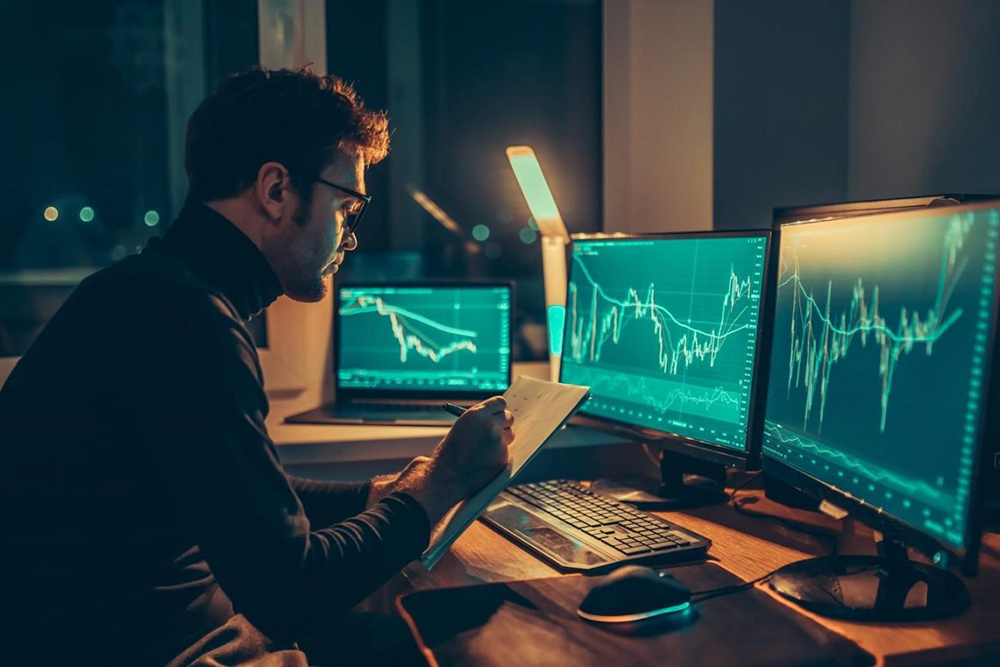老板们的噩梦?AI和远程办公让打工人干起了多份兼职

科技本应拉近我们之间的距离,但它却助长了偏执和不信任——至少在职场是这样。
远程办公时代帮助女性、残疾人更好地融入了职场。但面对员工拥有更灵活的工作时间和更大独立性的事实,老板们可不会这么高兴,特别是现在有一些员工开始利用他们新获得的自由同时打多份工。
在让员工每周重返办公室工作几天的斗争中,老板们可能开始占据上风了,但这并不一定意味着他们能够遏制员工“过度就业”的势头。人工智能的快速发展可能会成为员工手中的下一张王牌,帮助他们尽可能多地利用业余时间做点兼职。
人工智能以ChatGPT等大受欢迎的应用程序的形式出现在商业领域,已经在改变职场,预计还可能对生产力产生重大影响。麻省理工学院(MIT)和斯坦福大学(Stanford)的研究人员今年4月进行的一项研究发现,ChatGPT等生成式人工智能工具可以让员工的工作效率提高近14%,而新手和低技能员工的工作速度则可以提高35%。
周一,对冲基金经理、亿万富翁保罗·都铎·琼斯在接受CNBC采访时表示,就对生产力的影响而言,这项各家公司已经投入了数十亿美元的技术或许可以与互联网和现代基础设施相媲美。
“我确实认为,大型语言模型(和)人工智能的引入,将创造出在过去75年里只出现过几次的生产力繁荣。”他说,“比如说,这种大型语言模型将在未来五年使我们的生产力实现1.5%的增长,我认为这是可能的。”
雇主们已经在考虑如何利用人工智能来提高公司的产出。例如,数字营销公司Clearlink的首席执行官詹姆斯•克拉克在上个月的一次视频演讲中宣称,在意识到人工智能可以在30分钟内完成一些人类通常需要一整个8小时工作日才能完成的写作工作后,该公司应该“把正常输出提高30到50倍”。
但对公司来说,将这些生产率的提高转化为实际输出可能并不容易,因为一些工人已经在使用他们在疫情期间锻炼出来的“过度就业”技能,利用人工智能同时打多份工,克拉克也注意到了这一点。
“我们的一些开发者可能在为两家不同的公司打工。我们不掌握。我们希望不是这样,但我们不知道事实到底如何。”他在讲话中说。
克拉克可能有充分的理由担心,因为坊间已经有证据表明,工人们正在利用人工智能兼职来赚更多的钱。ChatGPT的用户用它起草越来越有说服力的求职信来申请多份岗位。上个月,Vice报道称,他们与多名因为ChatGPT的帮助同时打四份工的员工进行了交谈。得益于远程办公的工作方式和技术发展,一名打多份工的员工能将年薪从50万美元提高到80万美元。《财富》杂志无法独立核实这些报道。
在疫情期间,工人们在远程办公中修炼了同时做多份工作的艺术,在每周工作40小时的前提下,通常可以获得两份全职工资。疫情期间的躺平现象(即员工只完成最低限度的工作要求),被人们主要归因于普遍的倦怠,但这也让一些员工得以同时打多份工,每一份都表现平平。
但是,虽然人工智能对那些打多份工的员工来说是一个福音,它也可能扩大员工与雇主之间的信任缺口,而这种信任本来就已经因为远程办公被严重侵蚀了。虽然员工们一直坚称,他们在家工作的效率与在办公室一样高,甚至更高,但像埃隆·马斯克甚至ChatGPT的开发公司OpenAI的首席执行官萨姆·奥特曼等老板都远没有被说服。
雇主们现在已经非常不确定员工在家是否能够高效办公,以至于有些雇主甚至诉诸远程监控技术来密切关注在家工作的员工。一些公司在员工远程办公之前就已经在暗中监视他们了,比如美国最大的银行摩根大通(JPMorgan Chase),在疫情开始前不久推出了一个被员工们称为“老大哥”的数据收集和员工监控系统。
疫情结束后,这一趋势愈发流行,巴克莱银行(Barclays Bank)和联合健康集团(UnitedHealth Group)等公司开始追踪员工的一举一动,从写电子邮件花了多长时间到他们在键盘上敲入了什么。但就在员工和老板似乎在远程办公的问题上就要达成妥协之际,这项新技术的发展可能会再次激起旧日的偏执。(财富中文网)
译者:Agatha
夜猫子交易员工作到深夜,一个男人在他的家庭办公室里分析市场趋势并进行信息交流。
照片来源:ALEXANDR MUŞUC
科技本应拉近我们之间的距离,但它却助长了偏执和不信任——至少在职场是这样。
远程办公时代帮助女性、残疾人更好地融入了职场。但面对员工拥有更灵活的工作时间和更大独立性的事实,老板们可不会这么高兴,特别是现在有一些员工开始利用他们新获得的自由同时打多份工。
在让员工每周重返办公室工作几天的斗争中,老板们可能开始占据上风了,但这并不一定意味着他们能够遏制员工“过度就业”的势头。人工智能的快速发展可能会成为员工手中的下一张王牌,帮助他们尽可能多地利用业余时间做点兼职。
人工智能以ChatGPT等大受欢迎的应用程序的形式出现在商业领域,已经在改变职场,预计还可能对生产力产生重大影响。麻省理工学院(MIT)和斯坦福大学(Stanford)的研究人员今年4月进行的一项研究发现,ChatGPT等生成式人工智能工具可以让员工的工作效率提高近14%,而新手和低技能员工的工作速度则可以提高35%。
周一,对冲基金经理、亿万富翁保罗·都铎·琼斯在接受CNBC采访时表示,就对生产力的影响而言,这项各家公司已经投入了数十亿美元的技术或许可以与互联网和现代基础设施相媲美。
“我确实认为,大型语言模型(和)人工智能的引入,将创造出在过去75年里只出现过几次的生产力繁荣。”他说,“比如说,这种大型语言模型将在未来五年使我们的生产力实现1.5%的增长,我认为这是可能的。”
雇主们已经在考虑如何利用人工智能来提高公司的产出。例如,数字营销公司Clearlink的首席执行官詹姆斯•克拉克在上个月的一次视频演讲中宣称,在意识到人工智能可以在30分钟内完成一些人类通常需要一整个8小时工作日才能完成的写作工作后,该公司应该“把正常输出提高30到50倍”。
但对公司来说,将这些生产率的提高转化为实际输出可能并不容易,因为一些工人已经在使用他们在疫情期间锻炼出来的“过度就业”技能,利用人工智能同时打多份工,克拉克也注意到了这一点。
“我们的一些开发者可能在为两家不同的公司打工。我们不掌握。我们希望不是这样,但我们不知道事实到底如何。”他在讲话中说。
克拉克可能有充分的理由担心,因为坊间已经有证据表明,工人们正在利用人工智能兼职来赚更多的钱。ChatGPT的用户用它起草越来越有说服力的求职信来申请多份岗位。上个月,Vice报道称,他们与多名因为ChatGPT的帮助同时打四份工的员工进行了交谈。得益于远程办公的工作方式和技术发展,一名打多份工的员工能将年薪从50万美元提高到80万美元。《财富》杂志无法独立核实这些报道。
在疫情期间,工人们在远程办公中修炼了同时做多份工作的艺术,在每周工作40小时的前提下,通常可以获得两份全职工资。疫情期间的躺平现象(即员工只完成最低限度的工作要求),被人们主要归因于普遍的倦怠,但这也让一些员工得以同时打多份工,每一份都表现平平。
但是,虽然人工智能对那些打多份工的员工来说是一个福音,它也可能扩大员工与雇主之间的信任缺口,而这种信任本来就已经因为远程办公被严重侵蚀了。虽然员工们一直坚称,他们在家工作的效率与在办公室一样高,甚至更高,但像埃隆·马斯克甚至ChatGPT的开发公司OpenAI的首席执行官萨姆·奥特曼等老板都远没有被说服。
雇主们现在已经非常不确定员工在家是否能够高效办公,以至于有些雇主甚至诉诸远程监控技术来密切关注在家工作的员工。一些公司在员工远程办公之前就已经在暗中监视他们了,比如美国最大的银行摩根大通(JPMorgan Chase),在疫情开始前不久推出了一个被员工们称为“老大哥”的数据收集和员工监控系统。
疫情结束后,这一趋势愈发流行,巴克莱银行(Barclays Bank)和联合健康集团(UnitedHealth Group)等公司开始追踪员工的一举一动,从写电子邮件花了多长时间到他们在键盘上敲入了什么。但就在员工和老板似乎在远程办公的问题上就要达成妥协之际,这项新技术的发展可能会再次激起旧日的偏执。(财富中文网)
译者:Agatha
The Night Owl Trader Working late into the night, a man is seen from behind as he analyzes market trends and exchange information in his home office.
ALEXANDR MUŞUC
Technology was supposed to bring us closer together, but instead it’s fueling paranoia and mistrust—in the workplace at least.
The age of remote work helped women, people with disabilities, and members of the LGBTQ+ community feel more included in the workplace. But bosses were never completely comfortable with employees having more flexible hours and greater independence, especially since some workers started using their new-found freedom to work multiple jobs at once.
Corporate leaders might be starting to gain an edge in the battle to have employees back in the office a few days a week, but that doesn’t necessarily mean they’ll be able to clamp down on their workers’ “overemployment.” Rapid advances in artificial intelligence could become the next ace up employees’ sleeve in their quest to fill up their days with as many side-hustles as possible.
The commercial advent of A.I. in the form of wildly popular applications like ChatGPT is already transforming offices, and could have major implications for productivity expectations. Generative A.I. tools like ChatGPT could make workers nearly 14% more productive, an April study by MIT and Stanford researchers found, while novice and low-skilled employees were able to work 35% faster than they would have without an A.I. assistant.
The technology, in which companies are already investing billions, could rival the Internet and modern infrastructure in terms of its impact on worker productivity, billionaire hedge fund manager Paul Tudor Jones told CNBC on Monday.
“I do think the introduction of large language models [and] artificial intelligence, is going to create a productivity boom that we’ve only seen a few times in the last 75 years,” he said. “Let’s say that this large language model is going to give us a productivity boom of 1.5% over the next five years per year, which I think is possible.”
Employers are already thinking about how they can tap A.I. to improve their companies’ output. For example, James Clark, CEO of digital marketing firm Clearlink, declared in a video address last month that the company should “put out 30 to 50 times our normal production” after he realized that A.I. could accomplish in 30 minutes some content writing jobs that would normally take humans a full eight-hour workday.
But absorbing all those productivity gains for themselves might not be an easy task for companies, as some workers are already applying their overemployment skills honed during the pandemic and taking advantage of A.I. to work multiple jobs at once, a fact that wasn’t lost on Clark.
“Some of our developers could be working for two different companies. We don’t know. We hope that’s not the case, but we don’t know,” he said during his address.
Clark may have good reason to worry, as anecdotal evidence is already emerging of workers tapping A.I. to earn more on the side. Users are using ChatGPT to write increasingly convincing cover letters to apply for multiple jobs, and last month, Vice reported it had spoken with multiple workers who were holding up to four jobs at once thanks to ChatGPT. One overemployed worker was able to increase their salary from $500,000 to $800,000 a year thanks to the technology—and working remotely. Fortune could not independently verify those reports.
Workers refined the art of doing multiple jobs at once while working remotely during the pandemic, often earning two full-time salaries while still working a manageable 40 hours a week. The pandemic-era phenomenon of quiet quitting, when employees did the bare minimum of their job requirements, has been primarily attributed to widespread burnout, but it has also allowed some workers to get by with a mediocre performance at multiple jobs.
But even if A.I. could be a boon to workers seeking to become overemployed, it might also widen the gap in trust between themselves and their employers, which has already been severely eroded by remote work. While workers have long insisted that they are just as productive working from home as they are in the office, if not more so, bosses like Elon Musk and even Sam Altman, CEO of ChatGPT creator OpenAI, are far from convinced.
Employers have become so uncertain about whether their workers are being productive at home that some have resorted to remote monitoring technology to keep tabs on their at-home employees. Some companies were already spying on employees before they went remote, like JPMorgan Chase, the country’s largest bank, which launched a data-collection and employee monitoring system shortly before the pandemic began that staffers referred to as “Big Brother.”
The trend caught on during the pandemic, with companies like Barclays Bank and UnitedHealth Group tracking everything from how long it took them to write an email to what they typed on their keyboards. But just as employees and bosses are seemingly reaching a compromise over remote work, a new technological development could be poised to stir up old paranoias.













